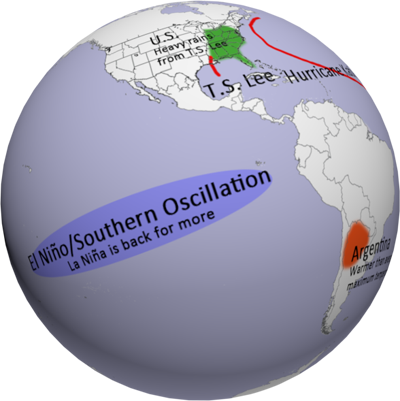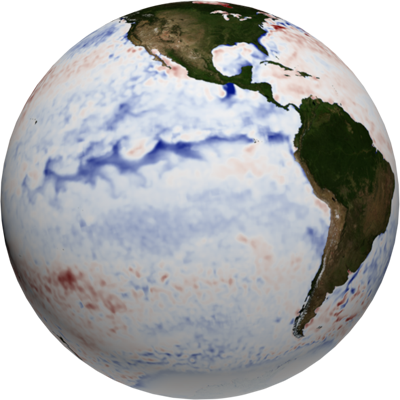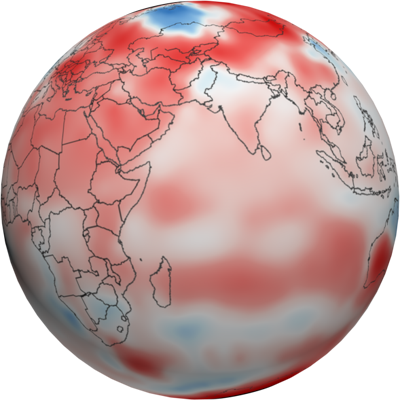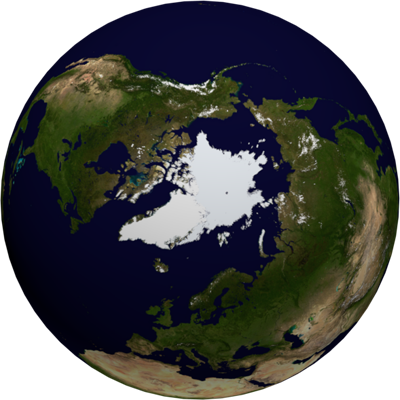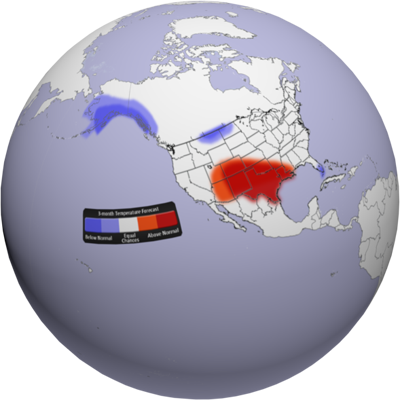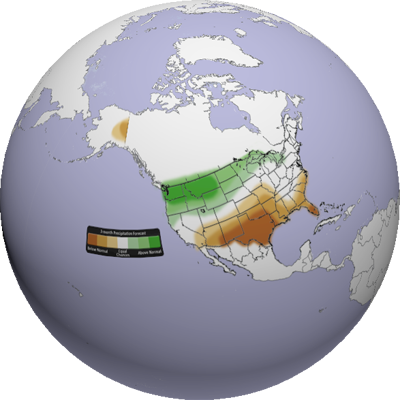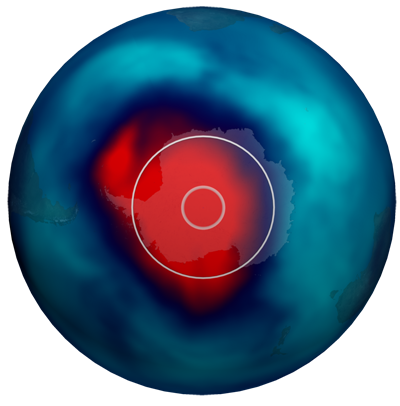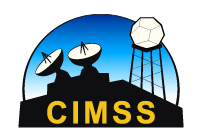Each month, around the middle of the month, we will provide information regarding the previous month’s climate, as well as the U.S. seasonal outlook for the coming months. Overall, preliminary data analysis suggests that October was the 8th warmest on record. Major stories include La Niña’s return, several areas with major flooding, and low concentrations of Arctic sea ice. More detailed information follows:
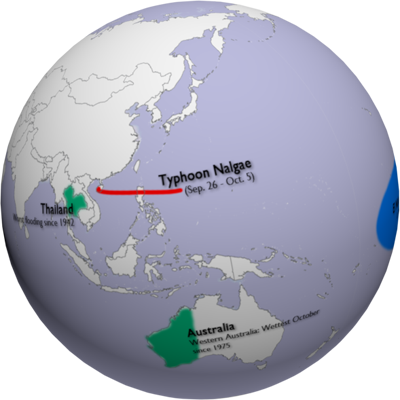 October 2011 Major Events
October 2011 Major Events
- This dataset highlights some of the major October events from the National Climatic Data Center’s (NCDC) monthly global climate analysis. The events are noted below with more information.
- El Niño/Southern Oscillation: Cooler than average waters in the eastern central Pacific Ocean mean that La Niña has returned. Click here for more information about La Niña and how it may impact the outlook for the forthcoming Winter season.
- United States: An early season storm brought heavy snow accumulations to parts of the northeast at the end of the month. (Oct. 29 – 31)
- Central America: Two storm systems triggered major flooding in landslides across Central America. Nearly 60 inches (1,520 mm) of rain fell over a 10 day period. (Oct. 11 – 20)
- Argentina: Several locations in eastern Argentina experienced their coolest October in five decades.
- United Kingdom: The U.K. experienced its warmest October since 2006 and eighth warmest in the last 100 years.
- Spain: Spain had its driest October since 1998.
- Algeria: Hundreds of homes were destroyed and ten people were killed after northern Algeria experienced several days of heavy rainfall and flooding.
- Thailand: Thailand experienced its worst flooding since 1942, due to storms and monsoon. (July-October 2011)
- Australia: Western Australia recorded its wettest October since 1975 and third wettest since records began (1900).
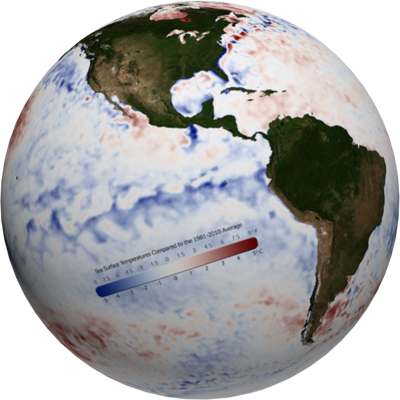 Sea Surface Temperature Anomaly
Sea Surface Temperature Anomaly
- The real-time sea surface temperature anomaly dataset is a great way to visualize the cooler than normal waters in the eastern Pacific ocean. This indicates the La Niña pattern mentioned above.
- Remember that the blues indicate cooler than average temperatures and reds indicate warmer than average temperatures (white: average).
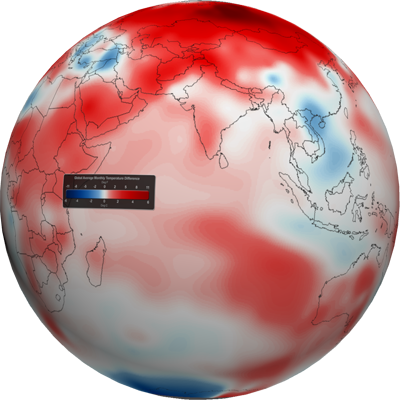 Global Temperature Anomalies
Global Temperature Anomalies
- Using the real-time Monthly Temperature Anomalies dataset is a great way to convey where some of the warmer and cooler than average areas were in October.
- The combined global land and ocean average surface temperature for October 2011 was the eighth warmest on record at 14.58°C (58.14°F), which is 0.58°C (1.04°F) above the 20th century average.
- The combined global land and ocean average surface temperature for the January – October period was 0.53°C (0.95°F) above the 20th century average, making it the 10th warmest such period on record.
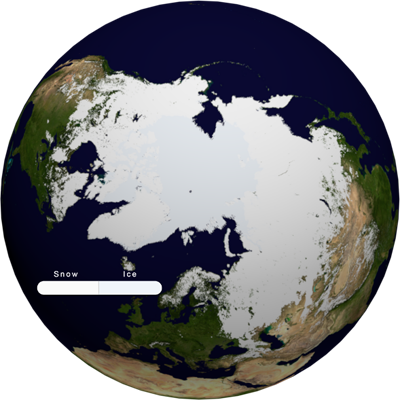 Snow and Ice… Winter’s on its way!
Snow and Ice… Winter’s on its way!
- Aside from helping to illustrate seasonal changes, the real-time Snow and Ice Cover dataset is a great way to convey sea ice change through time, including discussing how the current sea ice extent compares to other noteworthy years.
- The Arctic sea ice extent in October was the second lowest on record, behind 2007. The extent was 23.5% below the 1979-2000 average.
- In Antarctica (where it’s Summer), the October sea ice extent was the 12th largest on record, at 1.2% above the 1979-2000 average.
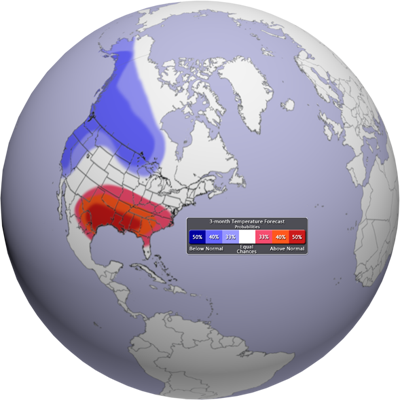 U.S. Climate Outlook – Temperature
U.S. Climate Outlook – Temperature
- As La Niña kicks into full swing for this winter, the effects will be felt across the country. For the December – February period, warmer than normal temperatures are expected across the southern plains and and into the southeast.
- By contrast, cooler than normal temperatures can be expected for Alaska, the Pacific Northwest and California, as well as a region stretching from Montana to northern Wisconsin.
- All other locations (in white) have equal chances of being warmer or cooler than normal. Major circulations and cycles (like La Niña) don’t play as much a role, making it more difficult to forecast.
- Forecast by NOAA’s Climate Prediction Center (CPC)
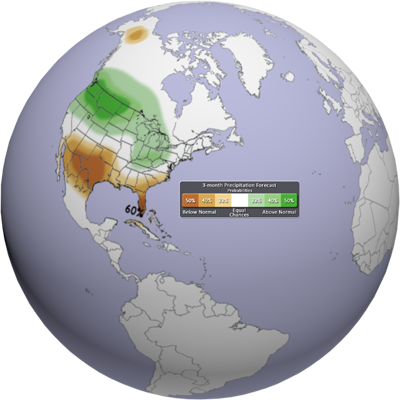 U.S. Climate Outlook – Precipitation
U.S. Climate Outlook – Precipitation
- For the next three months (Dec.-Feb.), drier than normal conditions will still prevail across the southern part of the country, especially Texas.
- It is likely that southern Florida will experience drier than normal conditions.
- Wetter than normal conditions, however, are expected across the northern states, especially in the northwest.
- All other locations (in white) have equal chances of being wetter or drier than normal. Major circulations and cycles (like La Niña) don’t play as much a role, making it more difficult to forecast.
- Forecast by NOAA’s Climate Prediction Center (CPC)
Helpful Resources for More Information
- http://www.ncdc.noaa.gov/teleconnections/enso/enso-tech.php
- http://www.ncdc.noaa.gov/oa/ncdc.html
- http://www.ncdc.noaa.gov/sotc/global/
- http://www.pmel.noaa.gov/tao/elnino/la-nina-story.html
- http://weather.gov/glossary/index.php?word=extratropical
- http://www.cpc.ncep.noaa.gov/
Where do I find the datasets?
- First, check your SOS system to make sure it’s not already in an EarthNow playlist. As this is a very new project, we are experimenting with how to provide the visualizations. It might already be there.
- If not, you can download the datasets and playlist.sos files from this FTP Site.
Well, that’s all for this time. Look forward to a look back at the 2011 Atlantic Hurricane season next time!




